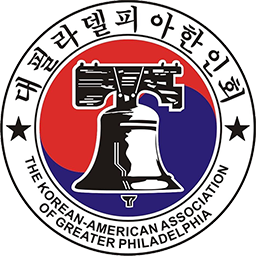The Korean American Association of Greater Philadelphia (KAAGP) opened a chapter in history on October 3, 1970.
At the time, the sentiment of Korean Americans was that the creation of KAAGP should fall on the foundation day of Korea. It seems that they may have wanted to cherish patriotic nostalgia in the city of pride, a place which is the nation’s cradle of independence and where the legacy of Dr. Philip Jaisohn’s efforts to liberate Korea still reverberates.
The first president elected was Kyu Hwan Lee, a doctor of Thomas Jefferson University Hospital.
The election for the first president was significant and intense as well. It was too close to call, headed for a run off.
The first executive body, which started with great enthusiasm, laid out a blueprint for KAAGP by publishing a bulletin and raising funds for the construction of the KAAGP building.
However, there was only a single candidate for the second presidency and no candidates ran for the third presidency, leading to the implementation of the Board of Directors system. This seems to have resulted in KAAGP’s regrettable failure to settle down in the early stage. Afterwards, the Board of Directors system again was replaced by the presidential system. But KAAGP experienced a lack of participation from Korean Americans due to a weak rallying point and failed to resolve institutional contradictions. The association barely sustained itself, alternating between the direct election system and the indirect election system.
It was difficult for a president with one-year tenure to accomplish long-sought tasks, but past presidents made numerous achievements that were suitable for the times.
Major accomplishments can be described in brief as follows: 1st president Kyu Hwan Lee mapped out a blueprint for KAAGP; 4th president Deok Sang Lim established a memorial monument for Dr. Philip Jaisohn; 6th president Young Ho Byeon introduced Korean culture to America by donating Mangbuseok (the stone on which a faithful wife stood waiting for her husband until she perished); 8th president Sang Ik Park bought a building for KAAGP by mustering support from Korean Americans; 9th president Hyeong Soo Song purchased a cemetery for Korean Americans; 20th and 22nd president Du Whan Yun registered KAAGP as a non-profit organization, came up with a system that enables Korean Americans to take a driver’s license test in Korean, held a monthly meeting with Philadelphia city hall, and overhauled internal management; and 22nd and female president Hee Ja Shin purchased the KAAGP building, which had been sold due to circumstances, jointly with the Senior Citizens Association.
25th president Kwang Soo Lee also made a notable achievement by trying to publish the accomplishments and history of KAAGP.
29th and 30th president Mi Ho Jeong constructed a building for KAAGP, which is said to be among the finest in the eastern part of America, and set up a new space for culture. She wrote a new page of history by laying the solid foundation for next generations as she focused on the normal and independent operation of KAAGP. 31st president Young Guk Kang laid the groundwork for the IT culture by setting up a website and devoted his efforts to doubling the number of full members of KAAGP. 32nd president Young Geun Park had real estate for KAAGP exempt from taxes and contributed to bringing KAAGP and the Senior Citizens Association toward mutual benefits and harmony. 33nd president Kwon Il Jang made efforts to build a new image for KAAGP under a slogan, “Working KAAGP, Open KAAGP, and Serving KAAGP.” 34th president Jung Geun Song will manage KAAGP to represent Korean Americans and to reflect their current status on the solid basis of the achievements of the past presidents.
History of KAAGP
KAAGP History

